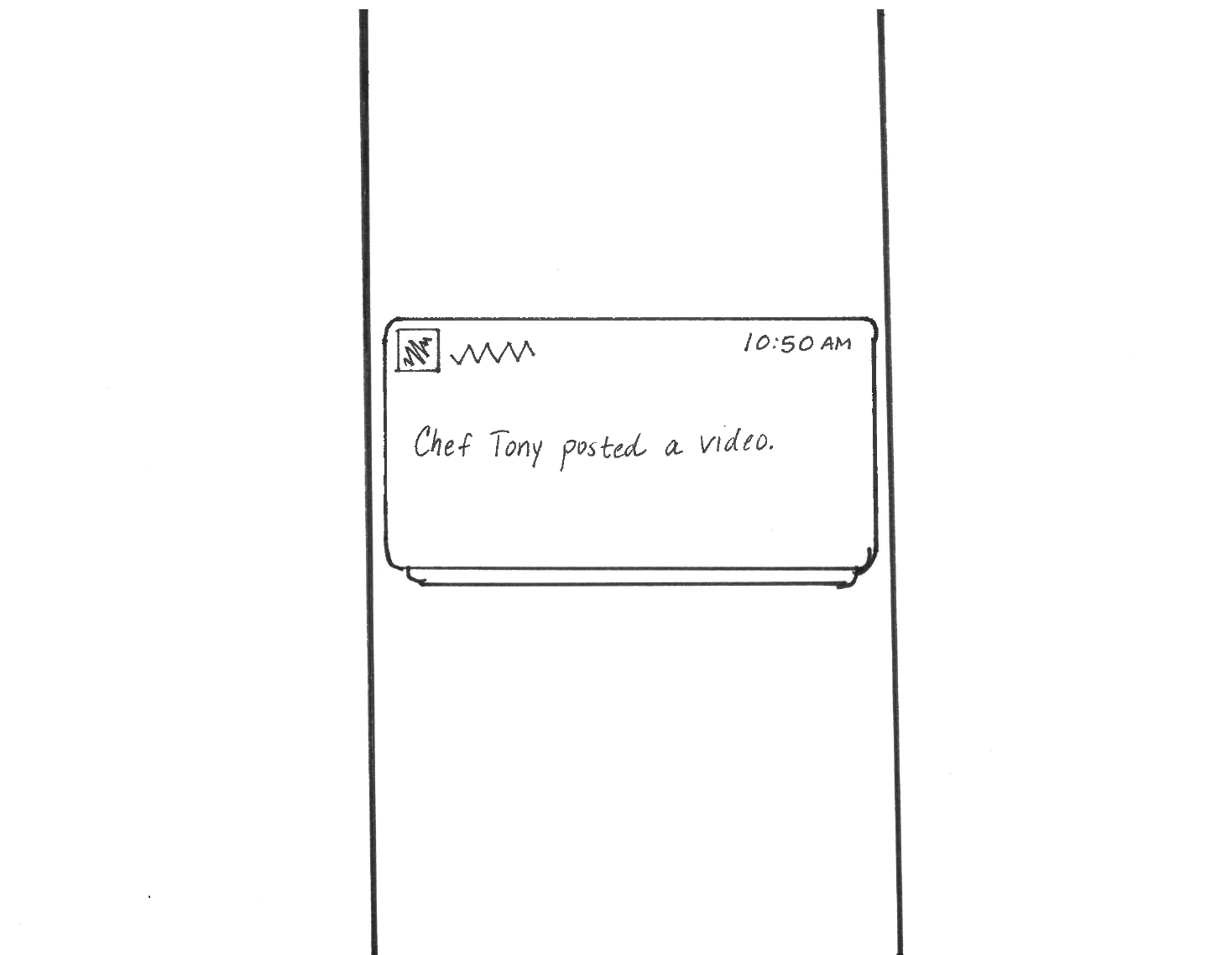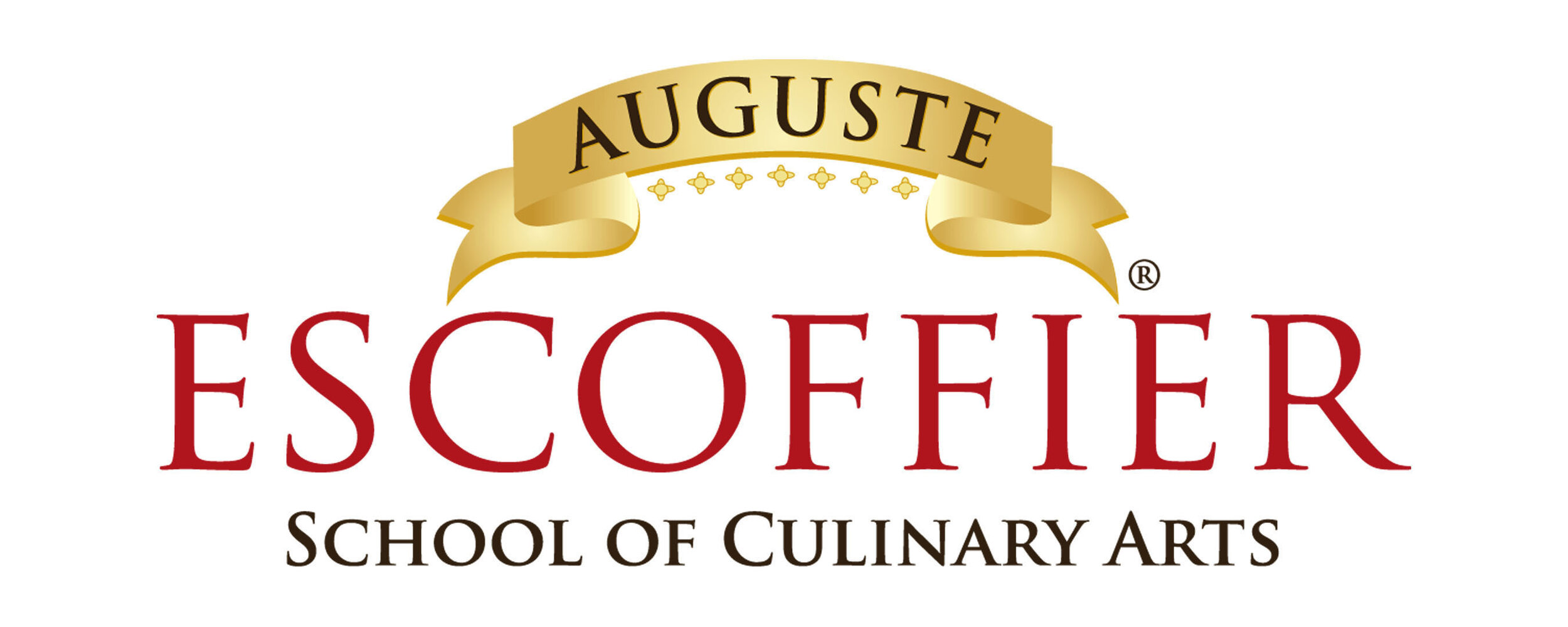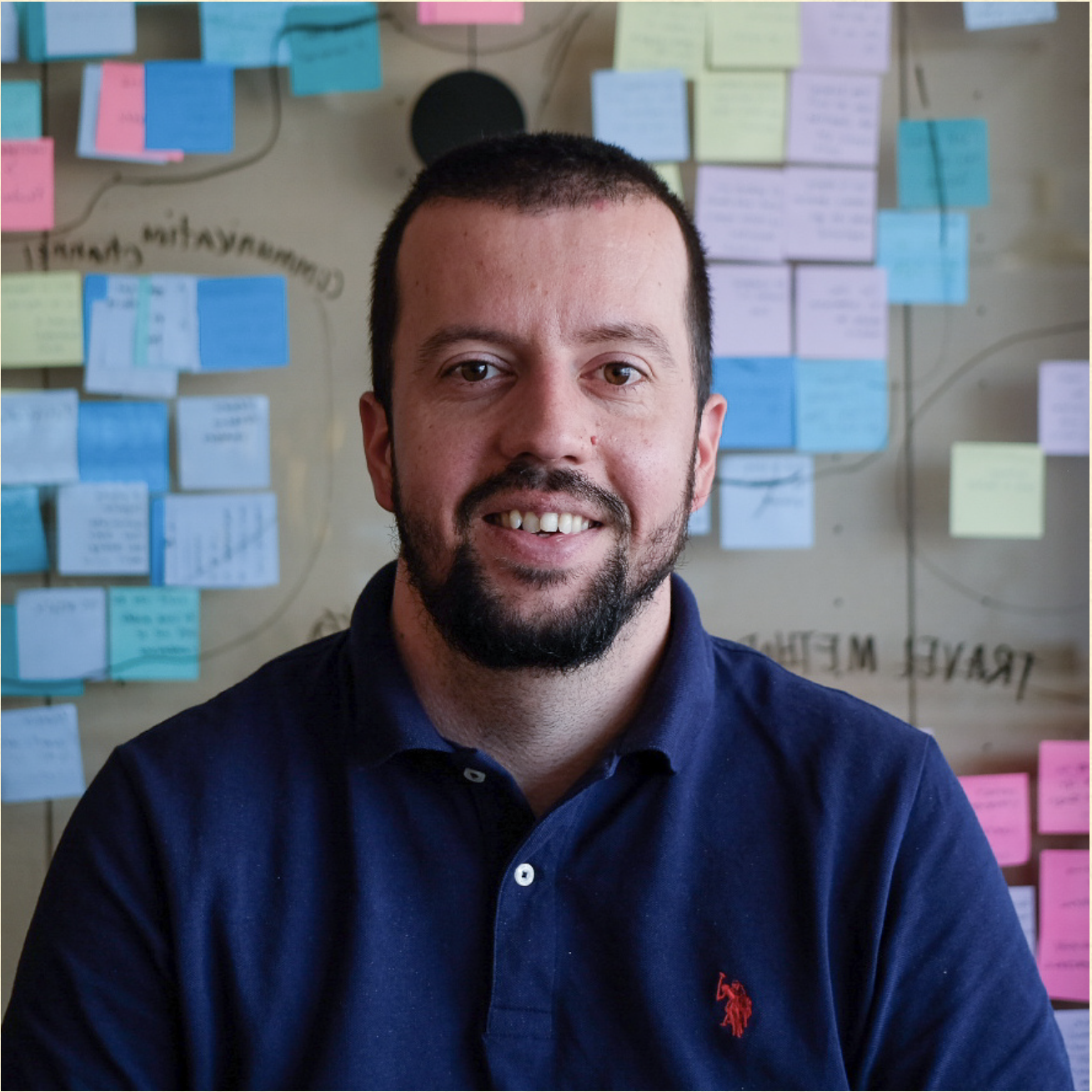Triumph’s Auguste Escoffier School of Culinary Arts
The only online accredited culinary institution in the US
Tools: Sketch, Axure, Zoom
Client: Triumph
Duration: 3 weeks
Role: User Experience Designer
Deliverables: Research plan, competitive analysis, interview transcripts, research synthesis, concepts, wireframes, Axure prototype, annotations
Meet our Team
Meet Triumph
Triumph Higher Education Group is an education technology company that focuses on culinary and pastry arts. Triumph has two schools that specialize in these academic fields under the brand name Auguste Escoffier School of Culinary Arts. Escoffier is the only school to offer 100% online professional culinary diploma from an accredited institution in the United States.
Why Did Triumph Seek Our Help?
Triumph sought out our team to improve the online education experience for their Escoffier students. They described the current design as a “frustrating ‘Frankenstein’ experience” with “many user-hostile steps.” Specifically, the project brief called out these areas for our help:
Broad information architecture, structure and navigation of courses and lesson content
Specific interaction patterns within courses, lessons, and pages (particularly when it comes to user flows that involve various third-party functionality and platforms)
After our kickoff meeting with Triumph, our team’s understanding of our scope would be focusing on these issues within their orientation course, and Triumph wanted to be able to translate these designs to all other online courses. Technological constraints were very minimal; Triumph uses the open-source platform, Moodle, for their Learning Management System but did not want to dictate or limit our solutions to the Moodle platform.
Current orientation layout
In this current layout you can see the red links which will either take the user to a new page, open up a youtube video, or open a pdf. Sometimes these are opened in a new window, sometimes the same window and other times within the page the user is on. The courses are broken up into Resources, Learn, Discuss, and Experience but with some content inconsistencies between courses. Right away we saw the need to standardize these interaction patterns and organization.
Triumph’s Goal
The identified metric for success would be measurable down the line as they were looking to increase repeat customers, or students who would enroll in more of their programs, since Triumph aims to continue growing their course offerings.
Getting to Know Escoffier Students
After compiling some domain research to get acclimated with online education, culinary education and online education conventions in layout, organization and usability, we started talking to students.
We interviewed 9 students who are currently enrolled at Escoffier.
Interview Objectives
We needed to get to know the students for ourselves and hear how they described their time at Escoffier. Our questions aimed to give us insight into their motivations, goals, what it was like taking culinary courses online, and their frustrations. We zeroed in on their student dashboard and the orientation course to understand what parts were “user hostile.”
Student Demographics
The average age of students is around 35
They are predominantly career-changers
Though proficient with using technology for recreation, often students are unfamiliar with using it for professional or academic purposes
Students are located all over the country
Unexpected Results
Our assumption was that we would come away from our interviews with tons of data that would guide us to write a beautiful problem statement. We expected them to elucidate the issues within the student dashboard and orientation courses, we expected that they would explain their experiences as students with frustration. But that’s not what happened.
Students were incredibly positive and complimentary about their experience with Escoffier. Students had mostly mild and diverse frustrations with the site and there weren’t many overlapping issues. We even had a student describe it as “perfect” and others who said orientation was very helpful for them and they wouldn’t change it. It made us wonder where Triumph was getting their information that their site was a user-hostile Frankenstein experience. We could see it needed help and we performed a heuristic evaluation on their current site and found inconsistency, confusing terminology, inaccurate system feedback and confusing navigation. However, students spent most of the interviews praising Escoffier and their online education experiences.
Hypotheses
We hypothesized at different reasons for student feedback
Escoffier staff is so helpful and accessible that the “user-hostile” design of the site is not registering as a negative for students. Students are able to text with their teachers and success coaches to get immediate help.
Students would blame themselves when they didn’t know how to do or find something instead of blaming the site. Maybe it was because they didn’t have anything else to compare it to as many were first time students in higher education.
Students didn’t want to badmouth their school.
Or we were talking to the wrong users. The students we spoke with were successfully progressing through the program, not “at-risk” students that might eventually drop out.
We made a list of what we knew:
Our data didn’t illuminate issues with Escoffier’s orientation course.
Escoffier has a robust support system that allows students to get immediate assistance.
This has, to some degree, mitigated tech issues students had as they did not halt students’ progress through their courses.
Students chose modes of communication based on expected speed of feedback and level of formality. Students appreciate quick replies and more casual communication environments.
Common frustrations included functionality and placement of the calendar and difficulty of finding specific information from classes.
Students seek inspiration from others and would like to be able to share and learn more with their classmates.
Students love the relationships they form during their time at Escoffier but they don’t always know the most appropriate way to get in touch with classmates or if others would be receptive to it.
We formed our initial problem statement to express the fact that students were not able to get what they needed from the dashboard itself, but instead found workarounds by contacting technical support, their teachers and their success coaches to walk them through it. The dashboard was not providing them the feedback they needed to know how to solve their problems, making them work to use the dashboard instead of the dashboard working for them.
Presenting Triumph With Our Research & Direction
At our second meeting with Triumph, our discussion revealed that the more important metric for the success of our project is lowering the dropout rate of students during the first 4 weeks instead of students wanting to come back for another certificate/degree. This would change our problem statement and make much of our research irrelevant.
We felt a little torn. Were we in a position to push back? If we pivoted away from our research, would that mean we weren’t doing our jobs? How could we meet our client’s needs even though we saw the job of the UX designer as one to shine a light on the “real” problem(s) for the client?
Pivoting in order to Balance Research-Backed Issues with Client Needs
We took a step back and evaluated this. The way we were going to bring value to our client was to meet their metrics for success. It was not within our scope to choose what a successful project would look like. Our research uncovered issues with the organization and usability of the site but Triumph communicated their priorities, so we documented them and saved for Triumph to consider when they were able to devote more time to them. It was not in their best interest at this time to use our expertise on those issues - they needed to find a way to hold onto as many students as possible at the beginning of the program.
Strategy After Realignment
We couldn’t talk to the students who dropped out, so we focused on what they would have in common with the students we did talk to, which included motivations, goals and the things that helped students get through the program. We sifted through the relevant data we had from our user interviews and had to get more information from students in sprint 2 to meet Triumph’s clarified goal of lowering the dropout rate during the first month of the program. We looked at what Escoffier was doing right, what they aren’t bringing to the table that students want and how we could make those pieces a focal point for new students.
Our designs should immediately showcase how much Escoffier has to offer students to make their dreams a reality, show them that the program is doable and support them through arguably the most challenging month of the entire program.
We used our research to develop a refined problem statement and 4 design principles.
Problem Statement
New students in Escoffier’s online school need a virtual campus that sustains their initial enthusiasm and motivation because an engaging experience will encourage them to stick with the program through the challenges associated with remote, independent learning.
Design Principles
Forward-Thinking: The design should accommodate the working pace of each student, anticipating the varying needs of those working ahead and those working to stay on track.
Mise en Place: Inspired by the French cooking term, this principle aims to guide the placement of information as well as the amount. Everything in its place - ready for when you need it.
Empower All Students: Students enter Escoffier from an array of backgrounds and experiences. Our designs should enhance their passion for culinary excellence and relieve any apprehensions by being approachable, understanding, and encouraging.
Build Camaraderie: The design should help foster the connections within the Escoffier community and provide ways to give and receive support so that online learning doesn’t feel like isolated learning.
These artifacts gave guidance for our designs by keeping with themes of encouragement, connection, support and simplification. We wanted to make the student dashboard feel more like a virtual campus so that they feel more in control and more included in the Escoffier community.
Ideas on Paper
Our research led us to ideas revolving around bringing students together, helping them connect to the Escoffier community and giving them the information they need to feel confident and informed.
We tested these concepts with Escoffier students over Zoom to gauge their reactions and visions for our concepts.










Results
We got pretty positive reactions overall, but we knew there was no way we produced 10 concepts that were worthy of moving forward with. We took this opportunity to understand what was underneath those reactions - just because something was positively received did not mean it was a good idea. We looked at the uses students saw for the concepts, if/how they connected these to deeper meanings and goals for their futures and how they thought they would have affected their experience as a brand new student. We were able to eliminate 5 concepts.
Students were excited about ideas that would connect them to their classmates and allow them to better inspire, motivate and support one another. Students told us how important it was to talk to each other and support each other. The current dashboard didn’t provide that in a way they wanted. In addition to connecting with their classmates, students wanted, and were very enthusiastic about, connecting with alumni and knowing more about life after Escoffier. We heard them when they expressed wanting to be better informed about things going on at Escoffier - just because they were taking courses online didn’t mean they had to feel far away from their school. Finally, we wanted to address some of the frustrations students felt with the usability of the dashboard and help them access the resources they need in a more convenient way.
Escoffier’s Virtual Campus
The solution we offered to the Escoffier students and our client is an enhanced student dashboard with features that will help students to be immediately included in the Escoffier community.
We prioritized the desktop experience this would reach the highest number of students and it is where they get acclimated to the program even if they end up downloading the Moodle app later on.
Tour Our Solution
Redesigned dashboard - a new layout for quicker comprehension and easy access to students’ most used tools, including a new section for announcements so students can stay informed about campus updates and an updated layout of the task list to give students a snapshot of things they need to complete for their courses instead of only being able to see one task at a time.
New student survey - a tool for Escoffier to get to know more about students so that they can better support them. This piece of our solution was designed not only to give students a way to focus on and track their goals and reasons for enrolling, but will also help administration and teachers to understand and support their students as well as view trends.
Community - a way to promote collaboration, networking and sharing interests amongst students and alumni. Our design was modeled after Facebook and Slack in order to allow students to be part of groups and to provide a casual messaging environment. We wanted to show Triumph what it could look like built into their site so they can develop it themselves or explore Slack’s embedding capabilities.
Recipe Box - a digital archive of recipes and notes students use throughout the course. This design allows students to access all course recipes and mark the ones they want to come back to.
Testing & Looking Ahead
Students were very excited about the designs and how they would help them connect to people, network and be active participants in the Escoffier community. They were pleased with the ease of access to their course calendar and the updates to their task list. The recipe box and its notes feature also generated a lot of enthusiasm.
Testing for our converged prototype was a hybrid of usability and concept testing - we still wanted to gauge students reception of the concepts behind the designs now that we had fleshed them out more. For usability, we set out to understand if our designed operated in the way students hoped and expected and how easily they could complete the tasks we presented.
Future Recommendations for Triumph
For the addition of the community concept, Triumph might consider using the existing technology, Slack, for most economical and immediate implementation.
We still recommend they keep information architecture and usability on their radar for updates since we did find issues in our initial round of research. Addressing these will improve the experience for students by reducing the cognitive load students bear when using their site. Our team conducted a heuristic evaluation of the current student portal and provided Triumph with our results so they have a document to aid them as they continue to update.
We suggest Triumph implement a formal mentorship program for students. Every single student we interviewed during this project was passionate about the benefits of mentorship and were eager to have a mentor and be a mentor.
Consider and further test the idea of integrating Escoffier’s social media into the Announcements panel of the dashboard. This was suggested by students as a way to further include them in the goings on at Escoffier. It would be an easy way for Escoffier to get content for the Announcements panel and build up their social following and participation.
Final Thoughts
Thank you, Triumph!
My team and I are incredibly grateful for the challenge and the meaningful work this project provided. I was so excited to be in a position to help these students and hear their stories. As someone who has made the leap to change careers, I understand the excitement and, maybe more importantly, the fear that comes along with that undertaking. It was a pleasure to find solutions for this group of people.
Triumph gave us a lot of freedom to explore solutions, not wanting to hamper creativity or redirect our work. We couldn’t have asked for a better project!
I’m proud of our team for keeping the Escoffier students at the heart of our process and always coming back to their words and needs when we needed to make decisions. We learned so much throughout this process and are better designers for having faced the challenges this project provided us.
Looking back, I think we would definitely do certain things differently, though I don’t think it would have changed the outcome. We know we would have pressed harder to understand Triumph’s goals in our initial meeting and if we had more time I would have loved to do a deeper dive into their information architecture. I think it’s a sign of a great project and client relationship when it lingers in my mind and I wish for more time with it.












